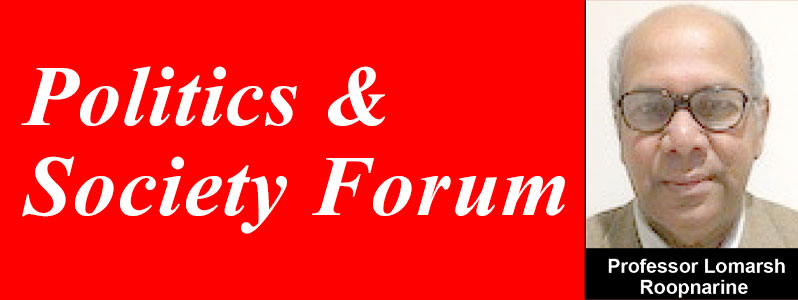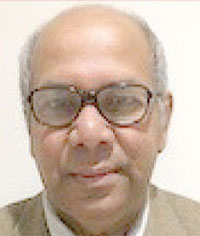THE book, Caribbean Masala: Indian Identity in Guyana and Trinidad, authored by Dave Ramsaran and Linden Lewis, draws upon sociological, anthropological, and historical schools of thought to understand the multilayered and multifaceted dynamics of Caribbean Indian identity. The authors use a theoretical perspective of creolisation to understand cultural mixing, assimilation, and adaptation of Indians since they arrived in Guyana and Trinidad in 1838.
To clarify in a nutshell, creolisation is a process in which the culture of the Caribbean—mainly African and European—experience a mixing that produces new identities that are different from their original forms. The mixing of African animistic religion and European Christianity that produced the syncretic religions of Santeria and Shango is an example of creolisation.
Caribbean Massala argues that some Indians have become creolised but that the cultural process of creolisation cannot be used to explain the cultural mixing of Indians. To do so would mistakenly imply that Indians have experienced the Euro-African process of mixing and that Indians have given up any customs associated with India. Instead, the creolisation of Indians must be examined in relation to their (a) Indian ancestral customs in India, (b) colonial plantation experience, and (c) post-independent development of Guyana and Trinidad.
The Indian customs of Matikor, a Hindu wedding ceremony, and Phagwah, a Hindu festival, were used to demonstrate how Indians have become creolised. These customs are not practised in the Caribbean in the same way as practised in India, but new cultural elements have been added in Guyana and Trinidad. In India and even historically in Guyana and Trinidad, Matikor was an event reserved for women only, but in the modern period, men do participate. This process is inevitable given the pressure of modernization, but what is remarkable is the resilience and endurance of both cultural events and others like Diwali, which have adapted to the pressure of modernisation. This process has provided a secure base for the survival of Indian identity and culture in Guyana and Trinidad, according to Ramsarran and Lewis. The above cultural process might have occurred, but a careful reading indicates that the process is not creolisation but cultural continuity and change among Indians in Guyana and Trinidad.
The misapplication of creolisation is noticed when Indian masculinity is examined. In Guyana, Indian masculinity is defined and practised according to the accumulation of property, the division of labour and authoritarian structure of the household and the ability to work continuously and save, among other factors (pp 99–106). In Trinidad, Indian masculinity is labelled as the “New Indian Man” who has evolved from having a carefree lifestyle to attaining the responsibility of fatherhood brought about by new economic and educational opportunities. Women also benefitted from access to education that has eventually brought them out of the confined household to the public spaces, competing and challenging patriarchal norms within their community as well as the larger society.
The different identities of Indian masculinity in both countries are conflated and confused with creolisation or cultural mixing. What appears to be happening is that the identity of Indian masculinity is changing from negative to positive because of economic opportunities for growth and development. This is not cultural mixing. I think the argument for Indian creolisation is not convincing since the narrative is confused with Indian cultural continuity and change in Guyana and Trinidad. I do share, however, that that contribution of Caribbean Masala to the field of Caribbean identity lies in the authors’ attempt to show that creolisation or cultural mixing does not always occur according to European and African customs. Rather, creolisation can also occur in relation to ethnicity, class, gender, and identity within Indian culture. Nonetheless, these contributions from Professors Ramsaran and Lewis dovetail well insofar as inspiring others to conduct more research on Indian identity in the Caribbean (lomarsh.roopnarine@jsums.edu).


.jpg)











